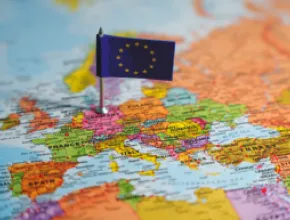Holding a meeting or incentive program in an overseas location brings an extra touch of excitement and challenge to the planning process. It offers the chance to infuse the program with a sense of place in a way that enriches and heightens the entire meeting experience.
To not meet the challenge is a missed opportunity, according to Eli Gorin, chief operating officer of Far Horizons Tourism and a long-time specialist in meetings held in Latin America.
“It’s imperative to offer attendees a cross-cultural experience in such a way they couldn’t have on their own,” he said. “It’s our job as planners to weave in as much of a local experience as we can into the events we do.”
Authentic Experiences
However, Gorin noted that the job of providing quality local experiences is not always easy. It takes research and legwork to provide amenities and experiences that are truly authentic and representative of the destination.
“Sometimes you may think you are doing something typical in that destination, but it’s actually just done for tourists,” he said. “For example, you need to know that food in Mexico is not about fajitas and tacos. The cuisine is much more complex and it varies considerably within each city in Mexico. Not only do you need to research the country, but also the region and what sets it apart.”
Gorin did just that when planning a meeting in Cartagena, Colombia, that included an excursion to the Rosario Islands, an archipelago of tiny islets an hour offshore from the city. The meeting elements, including the food, transportation and gifts, reflected the Caribbean vibe of Cartagena, which is different than inland cities such as Bogota.
“The foods are very different from inland Colombia, so we served things like coconut rice, plantains and fried fish,” he said. “We arranged for a trip out to the islands, where a lot of the local people go.”
To maximize the authentic feel, the meeting was based in the heart of the old city at the Sofitel Legend Santa Clara Cartagena, a hotel converted from a 17th century convent. Transportation around the city was in chivas, colorful, open-air buses. For gifts, Gorin arranged for Colombian sombreros to be custom-made for attendees and provided them with small books about the destination.
Platinum Level
Just how effective local elements can be, especially those that attendees could not easily duplicate when visiting the destination on their own, was illustrated by Platinum Club 2013, an incentive program in Florence and Rome planned by MFactor Meetings that won a SITE Crystal Award in 2014. The program for 44 star qualifiers from a high-tech company kicked off in Florence with horse-drawn carriage rides across the Arno River to the magnificent Palazzo Capponi, owned by the Ferragamo family. Ferragamo fashion design was integral to the evening, which included a museum-quality fashion display and a five-course gala dinner with tables adorned with Ferragamo-inspired fabrics and wines served from the family winery. Other highlights of the program included a private tour of the Vatican Museum and customized gifts such as leather train cases and handmade Florentine notecards.
In executing the program, Kim Kondo, MFactor president, and Renee Robertson, MFactor director of purchasing, both based in the San Francisco Bay Area, worked with Gastaldi Global Travel, a DMC based in Italy. Along with getting up early to bridge the nine-hour time difference, Kondo and Robertson faced the challenge of communicating to the DMC about the high level of creativity they wanted infused into the event.
“We were on the phone with them frequently—email alone won’t work—to let them know exactly what we needed,” Robertson said. “We provided many samples of what we had done before, as we pride ourselves in not doing off-the-rack programs.”
Also helpful were site inspections beforehand to absorb the flavor of the destinations, Kondo said.
“In order to go beyond a hokey experience, you really have to experience the destination on a personal level for yourself,” she said. “It’s important to walk the streets and go into the places where the local people go—don’t just go to the most obvious tourist places. I did a lot of research beforehand and was able to tell the DMC exactly what I wanted to see.”
Rainforests and Salt Mines
Another advocate of infusing local experiences into meetings is David Kliman, president of The Kliman Group, who put this into practice during a recent meeting in Brisbane, Australia.
“Brisbane is a very commercial city, but just a half-hour inland you have a Southern Hemisphere rainforest that is pristine and untouched,” he said. “During the meeting, we took people there and they were blown away.”
Kliman also gained insight on how effective a local experience can be when he served as a speaker at MPI’s European Meeting and Event Conference in Krakow, Poland, in February 2015. For him, the highlight was a dinner held in the 800-year-old Wieliczka Salt Mine, a UNESCO World Heritage site with chapels and statues carved out of rock salt deep within a mountain.
“We were 300 feet below ground in a massive cathedral-like space, with Polish food and music and guides explaining the historical significance of the mine,” he said. “It was a great example of an authentic experience. This is what attendees want and what travelers want in general. We are not looking for what we have at home.”







